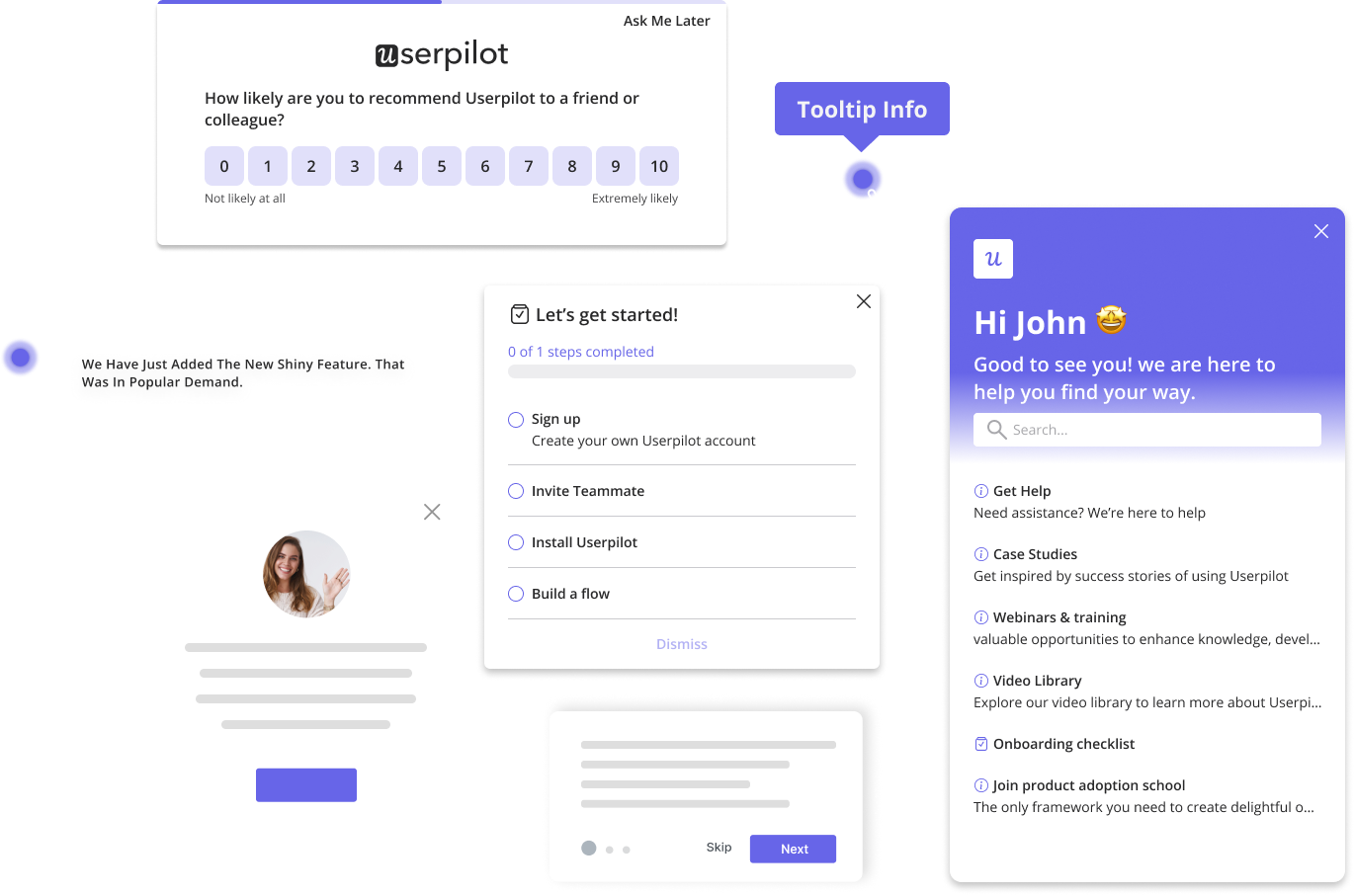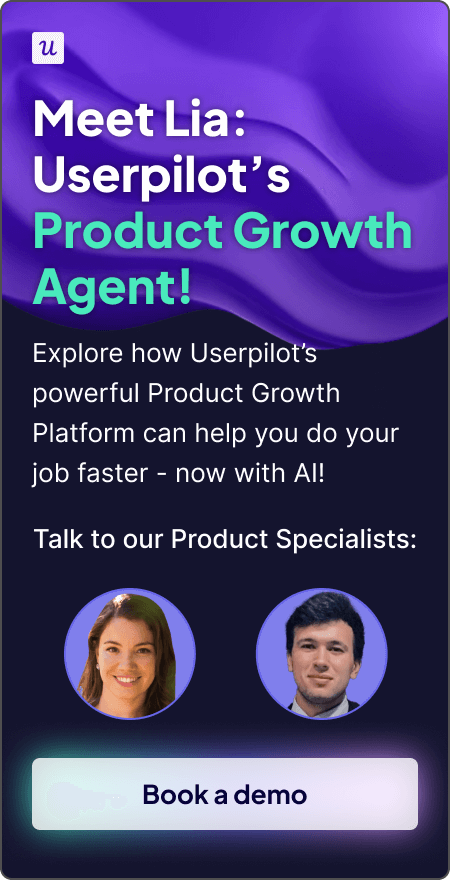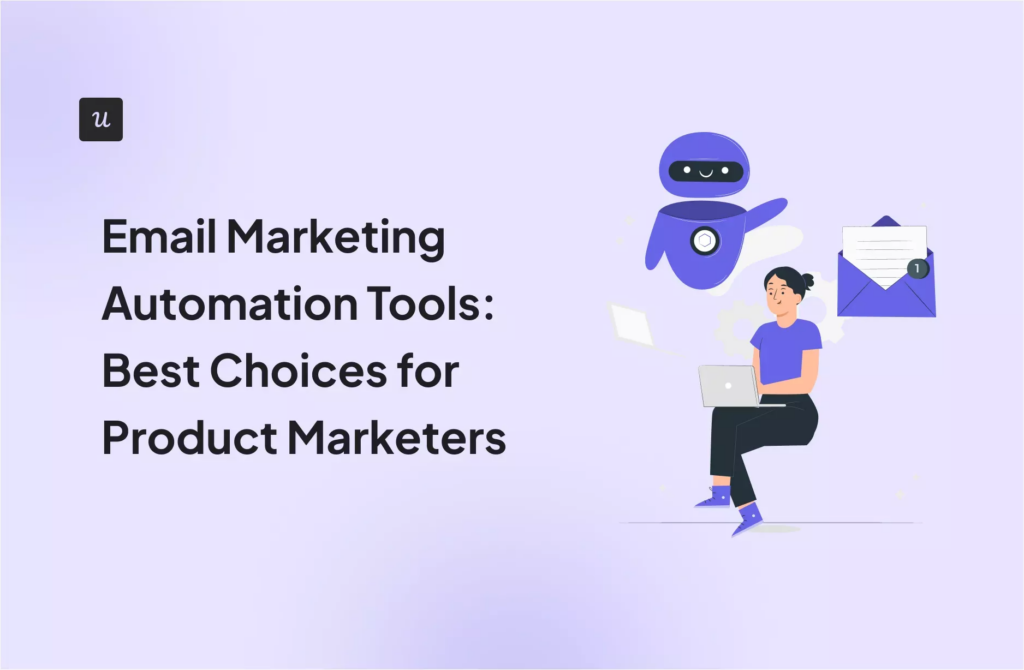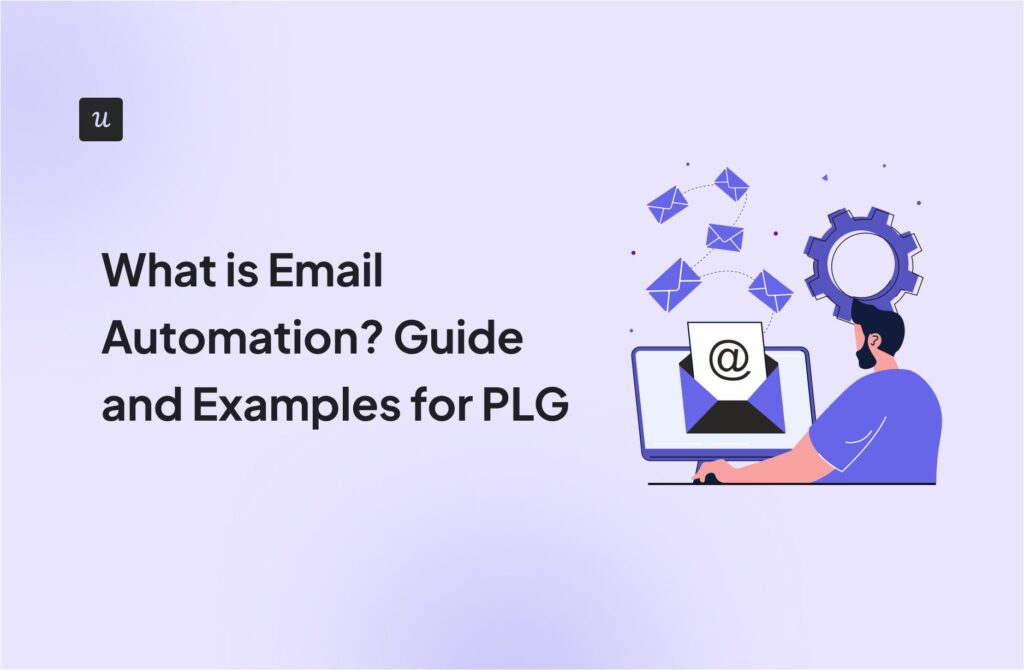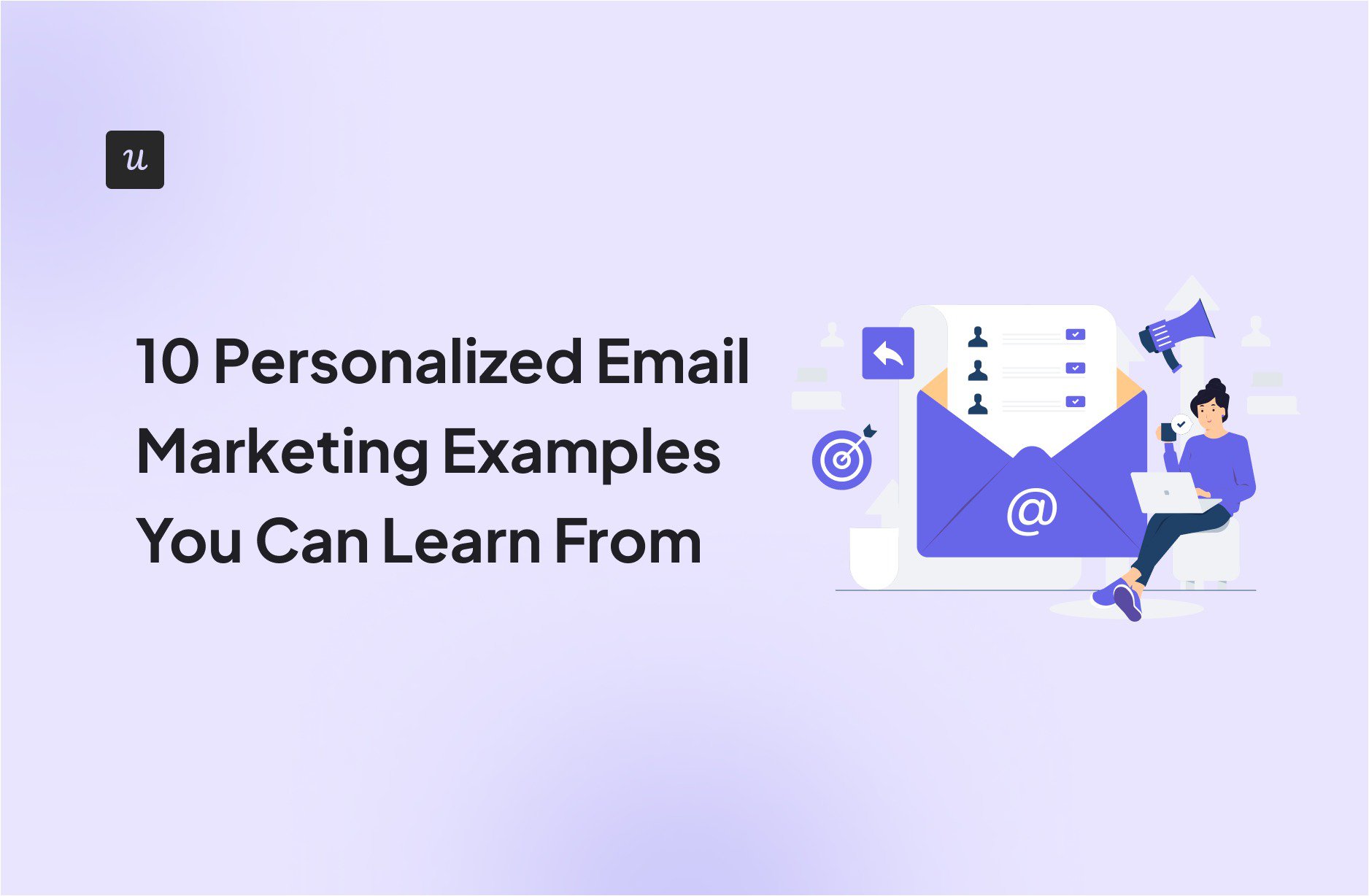
According to the Zendesk Customer Experience Trends Report 2025, 76% of customers expect personalisation. However, when it comes to email, for many product marketers, personalization often begins and ends with “Hi [First Name].” That might have been impressive a decade ago, but today it’s the bare minimum. To drive engagement and conversions, you need to add more layers of personalization to your emails.
Smart personalization goes deeper by using context, behavior, and lifecycle data to send emails that feel hand-crafted for each user, even when you’re reaching thousands. To help you get inspiration for your next campaign, I’ve compiled 10 personalized email marketing examples from leading brands like Zapier, Duolingo, and Miro, and broken down the strategies behind them in detail.
Try Userpilot Now
See Why 1,000+ Teams Choose Userpilot
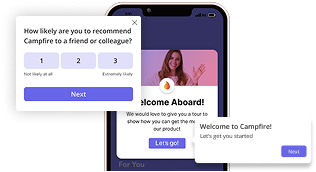
What are some ways to personalize emails in SaaS?
Before I walk you through real-world examples, I want to set the stage by introducing the personalization framework these brands use. Here are some common ways to tailor your emails:
- Basic personalization: Let’s start with the easiest lift: using data that’s already sitting in your CRM, like first name, company name, and job title, to humanize generic emails. It’s not groundbreaking, but it’s a solid first step toward relevance. An email subject line like “Quick question for you, Lisa” or “Something for your team at Upstart Labs” instantly makes the email feel less robotic.
- Demographic personalization: Go a level deeper by tailoring emails based on demographic attributes such as industry, company size, or location. The more your email reflects the real-world context of the recipient, the more likely it is to resonate and convert. One way to do this is to surface the most relevant value props for each user persona. For example, if you are a project management platform, emphasize compliance features when emailing enterprise customers in regulated sectors like healthcare. For startups, focus your messaging on ease of use and cost-efficiency. Another example is sending emails to users in Japan in Japanese to remove language barriers and build trust.
- Behavioral personalization: Use signals like pages viewed, features activated, or webinars attended to send behavioral emails that feel timely and specific. Behavioral data gives you context, and context makes emails feel like they came from a real person, not a drip campaign. For example, if someone is consistently engaging with a particular feature, send a feature highlight email showcasing how other users are getting value from it.
- Lifecycle-based email personalization: And finally, my favorite strategy as a product-led growth marketer: meeting users where they are in their product journey and nudging them towards the next logical step. New users get onboarding emails that guide them to the first value; active users receive advanced tips to deepen engagement; power users get prompts to upgrade; inactive users get targeted re-engagement campaigns; and loyal customers get invited to advocacy campaigns.
10 Personalized email marketing examples for inspiration
Now that you’ve got a handle on the core personalization strategies, let’s see how each brand is doing it in action and the techniques that make them stick.
1. Zapier
Personalization based on: use case, in-app behavior
When the onboarding email below from Zapier showed up in my inbox, it instantly felt like a continuation of my journey I had earlier in the app. You see, I had been poking around the Zapier Tables feature inside, but didn’t use it as intended ( and by this, I mean I didn’t create a project), so they immediately triggered this email to show me how to use the feature effectively.
First, the subject line “Checking out Tables?” referencing my activity instantly clicked and prompted me to open the email. Inside, instead of explaining the feature in abstract terms, it tied Zapier Tables directly to things I care about: managing leads, approvals, and onboarding, and linked directly to pre-built templates for my use case. This significantly reduced the friction of getting started and adopting the feature.

2. Duolingo
Personalization based on: milestone, product usage data
Duolingo is no stranger to personalization, and this milestone email is a masterclass in making the product usage feel personal. The email celebrates users’ anniversaries by pulling in their actual progress stats: XP earned, words studied, and phrases reviewed, making each user feel accomplished.
I like how they used temporal personalization tags (marking the exact anniversary) combined with behavioral data (specific achievements) to send a hyper-personalized email to each user. That level of specificity makes the message feel hand-crafted, even though it’s automated.

3. Headspace
Personalization based on: demographic data, seasonal
I came across this Headspace promotional email sent to one of their main audience segments, students, and was impressed by how much thought they put into every single detail. The email was delivered at the beginning of the academic year in September, when stress levels among students are peaking, and offered them a generous 85% discount.
The copy is also hyper-relevant; instead of highlighting the general benefits of meditation like in previous emails, it leaned on real student pain points and stressors such as tough classes, messy roommates, and busy schedules.

4. Mainstack
Personalization based on: first name, in-app behavior
If I had abandoned my setup flow on Mainstack, this is exactly the kind of email that would get me to come back. It doesn’t guilt-trip or annoy; it simply says, “We see where you left off, and we’re here to help you pick up from there,” then gives a super clear path forward with a CTA leading to an implementation guide. They also leave the door open and encourage reaching out directly if one needs white glove onboarding.
I appreciate how the tone is friendly yet professional. It reads like encouragement from a trusted colleague who cares about your success. The closing, “Your No. 1 Cheerleader, Marie” sign-off is the perfect final touch, making the brand feel both human and approachable.

5. Yelp
Personalization based on: location
Right after COVID, when indoor gatherings still felt risky, this Yelp email struck the perfect tone. It began with, “Whenever you feel ready to dine out again,” meeting readers exactly where they were emotionally and acknowledging the new reality we were all in.
The email then highlighted a curated list of outdoor dining options, which were widely regarded as the safer choice at the time. Every restaurant featured was in the recipient’s location, so they didn’t have to sift through irrelevant spots.

6. Grammarly
Personalization based on: product usage data
Grammarly’s email is a masterclass in implementing gamification that drives habitual usage.
It opens with my writing streak, 153 weeks, celebrates my progress so far, and builds momentum for the next milestone badge at 156 weeks. Then it surfaces my personalized usage summary, like the number of words analyzed and common mistakes, to remind me of the value I was getting from the platform.
The copy strikes a balance between praise and constructive feedback. It feels like I’ve hired a writing coach who’s closely monitoring my progress and helping me improve.

7. Miro
Personalization based on: demographic data
Miro could have sent a plain system-generated invite email, but instead, they made this transactional email feel like a direct handoff from a real person. The email leads with Antoine Milkoff’s name (the colleague inviting the email recipient), and gives the NUMA team multiple callouts, instantly establishing familiarity. Then, Miro ups the anticipation with a live snapshot of the actual project board the team is working on.
Even the footer is personalized, giving you Antoine’s own email in case the recipient wants to confirm the invite.

8. Xtensio
Personalization based on: lifecycle stage
To further strengthen customer relationships and turn its power users into product advocates, Xtensio runs this review request email campaign. They offer a $36 credit for posting on G2, Capterra, or Trustpilot, plus a $20 gift card for the first 85 Capterra reviewers, making this a win-win situation for both sides.
Incentives like this can be powerful for building social proof, but they work best when aimed at your most engaged, long-term users. Target those with at least six months of consistent use to ensure the feedback you get is authentic and rooted in real experience.

9. Spotify
Personalization based on: product usage data
Spotify’s Wrapped campaign is a great example of how to turn data into emotional storytelling. Music is deeply personal, and Spotify taps into that connection to show how their platform has made an impact in my life. The timing is smart, just before the new year, when reflection is already top of mind.
On top of the email, I can see my product usage data summary: how many minutes I listened to music on Spotify, which reinforces the product’s value and builds momentum. Then they ask me to guess my top song, which adds a fun, personal twist and immediately re-engages me with the app.

10. AppSignal
AppSignal’s upsell emails are usage-based upgrade email campaigns that build trust through radical transparency. They show exact usage patterns (“exceeded by 10%+ for 2 of 3 months”), explain the situation clearly, and prompt the user to expand their account.
What pleasantly surprised me is that they include links to usage optimization guides that help customers avoid upgrades. I’ve never seen another SaaS upgrade email that beats this level of transparency and empathy.

How can Userpilot help with email personalization?
Our platform, Userpilot, allows product marketers to deliver personalized engagement flows across multiple channels, including emails.
Let’s have a closer look at our features:
- Design customized emails with a no-code editor: Launch fully branded, visually appealing emails quickly without depending on engineering or design teams. You can create customized emails for dozens of different campaigns in no time.
- Apply dynamic attribute personalization: Automatically insert any tracked user attribute, like plan type, job role, company name, or product usage.

- Write copy faster with AI: Our built-in AI assistant helps you quickly tweak your email copy and tailor it to different user segments, using words that resonate with each.
- Localize email content for global audiences: From Arabic to Japanese, Userpilot helps you connect with audiences worldwide by localizing emails in up to 30 languages, including right-to-left formats.
- Add a customized signature to each email: Which is particularly valuable for enterprise accounts, where each message comes directly from their assigned Customer Success Manager.
- Send emails at optimal times for each user group: Trigger emails based on real-time behaviors or schedule them at certain hours to reach users when they’re most likely to engage.

- Track the performance of your personalized campaigns: Get full visibility into how your emails perform, open rates, click-through rates, bounce rates, and unsubscribes. You can even drill this data down and see how email performs with each segment or in a specific time period.

- Unify product data and correlate email engagement with product usage: Email performance sits right alongside your funnel analysis, path reports, and retention cohorts, so you can understand how email engagement connects with in-app behaviour. This helps break data silos and instantly answer questions such as, “Did users who clicked on your feature announcement email adopt the feature?”

Want to see Userpilot in action? Then just book a demo and we’ll take it from there.
FAQ
What is email personalization?
Email personalization is the practice of tailoring content to individual recipients using their demographic data or app behavior to make messages more engaging.
How to personalize marketing emails?
Start by creating user segments based on characteristics and behavior, then create personalized templates with strong subject lines and relevant messages. Finally, add touches like a personalized greeting, tailored product suggestions, or special discounts.
What is an example of a personalized email address?
An example of a personalized email address is: [email protected]. This address is personalized because it includes a specific person’s name (“john.smith”) paired with a branded domain, rather than a generic name like [email protected] or [email protected]. A personalized address helps build trust, reinforces branding, and makes client communication more direct.
What’s the best platform for personalized emails?
Three popular email personalization platforms are Userpilot, HubSpot, and Klaviyo. Userpilot is ideal for SaaS teams running integrated PLG campaigns, combining emails with in-app messaging and push notifications. Klaviyo is perfect for e-commerce businesses that want to pair email with SMS to drive sales. HubSpot provides a complete marketing and sales platform with advanced CRM tools.

